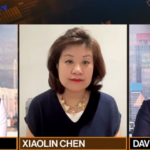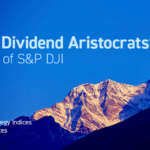Tracking the MSCI Inclusion: the MSCI China A Index versus the CSI 300 Index

The proforma weighting of China A-shares within the MSCI Emerging Markets Index is scheduled to be released tonight at 5pm EST, ahead of the November 26th rebalance. After the rebalance, the inclusion factor of China A-Shares in MSCI's Emerging Market Indexes will reach 20%1.
We believe that the MSCI China A Index has distinct advantages over other popular Mainland China benchmarks, in particular, the CSI 300 Index. The CSI 300 Index, originally built for domestic Chinese investors, consists of the 300 largest China A-Share stocks ranked by market capitalization. In comparison, the MSCI China A Index currently tracks 443 securities that meets MSCI's criteria for international investors2.
While the CSI 300 Index only includes Large Cap securities, the MSCI China A Index is more comprehensive. Upon the November inclusion, 204 China A-shares will be added, 189 of which are Mid Caps1. Currently, the constituent count overlap of the Index with the CSI 300 Index is 53%3.
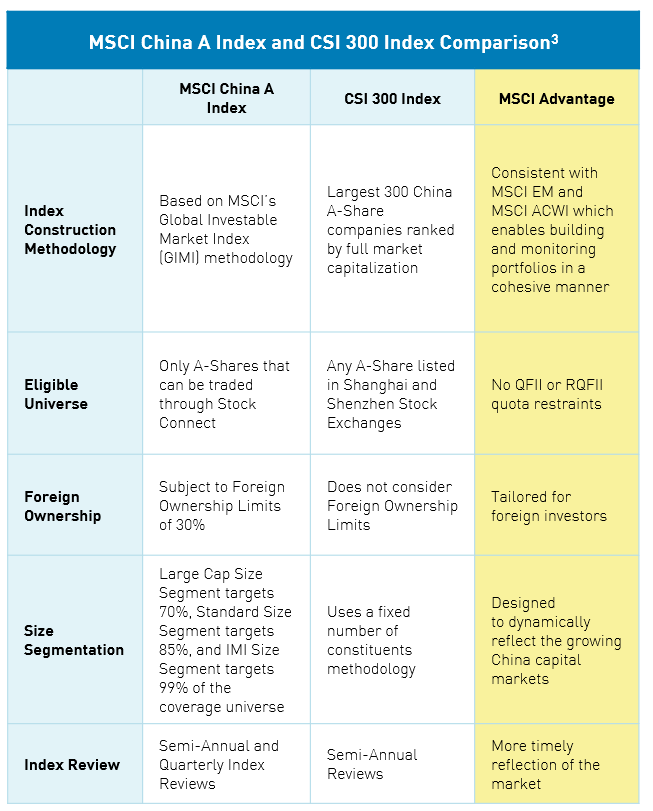
With $1.8 trillion tracking the MSCI EM Index alone4, the MSCI inclusion could trigger significant institutional flows from both passive and active managers into the A-Share securities in the MSCI China A Index.
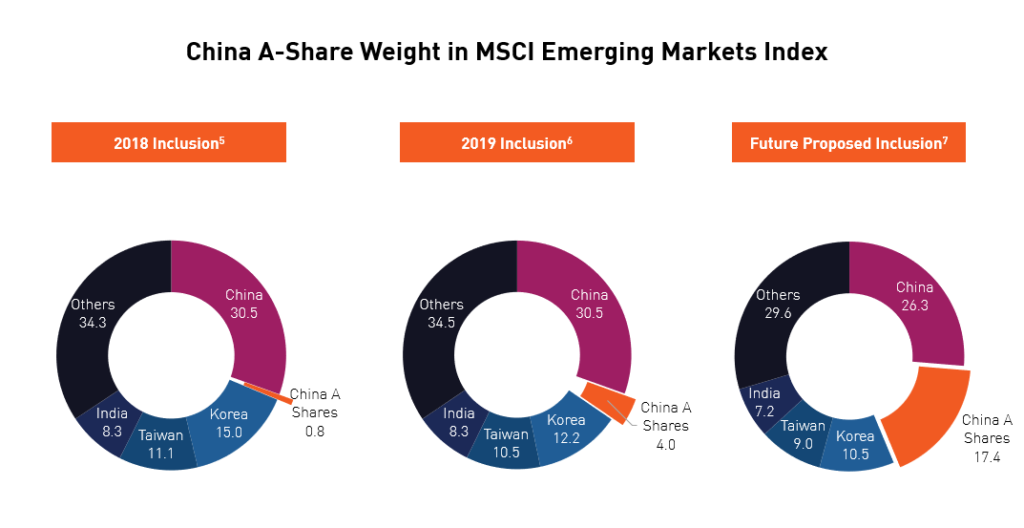
The MSCI China A Index Advantage
With a decreased weight in financials and increased weight in growth sectors such as information technology and healthcare, we believe the MSCI China A Index is a more holistic representation of the mainland China market than the CSI 300 Index.
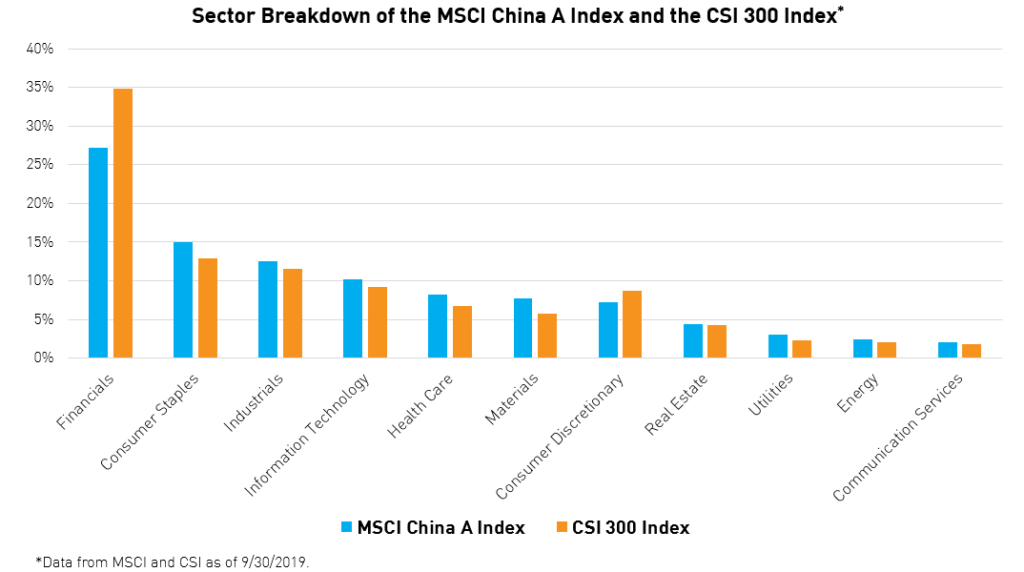
Additionally, the November inclusion of Mid caps and more ChiNext8 securities further diversifies the constituent makeup of the MSCI China A Index and distinguishes it from the CSI 300 Index.
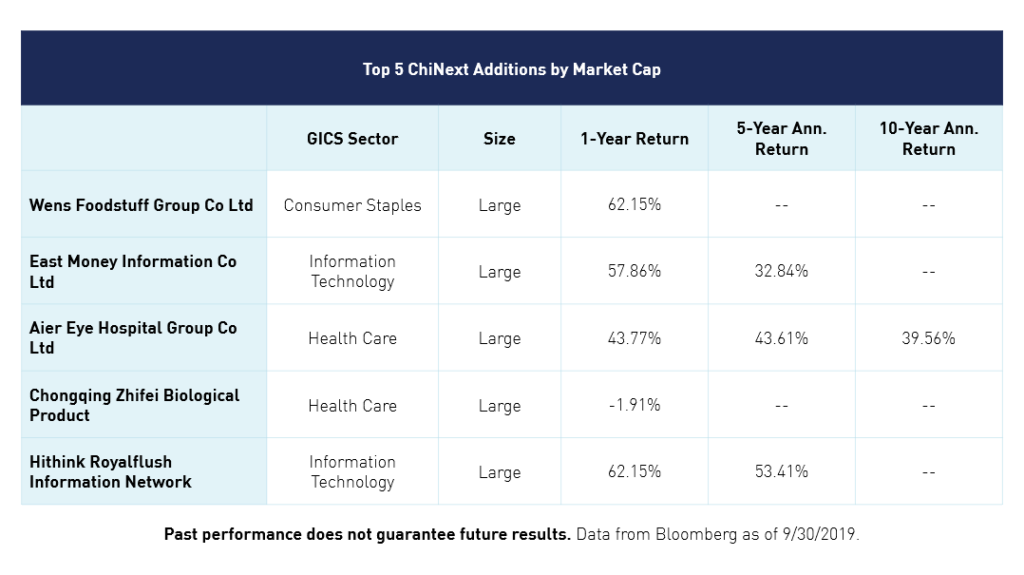
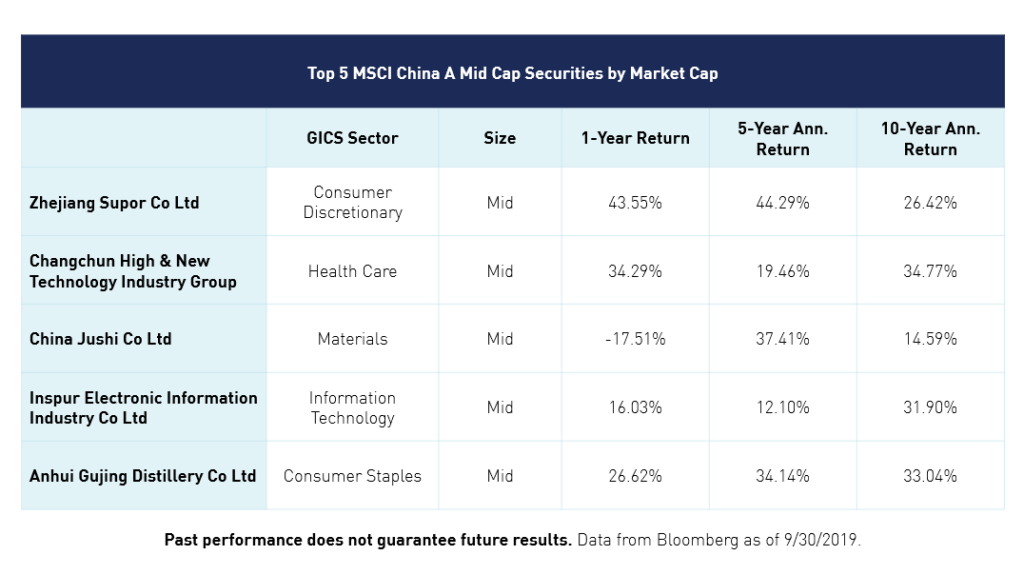
In anticipation of additional MSCI Mid Cap inclusions later this month, inflows into Shenzhen Connect have already noticeably increased, exceeding that of Shanghai Connect over the past 3 months. This is significant because Shenzhen's exchange is much smaller than the Shanghai exchange (75% smaller by market cap), and primarily consists of emerging, growth sector companies. Since August, investors have poured $92.4 billion into Shenzhen listed stocks versus $89.7 billion into Shanghai9. The heavier purchasing of relatively smaller market cap Shenzhen names implies that investors are buying inclusion stocks ahead of the November rebalance.
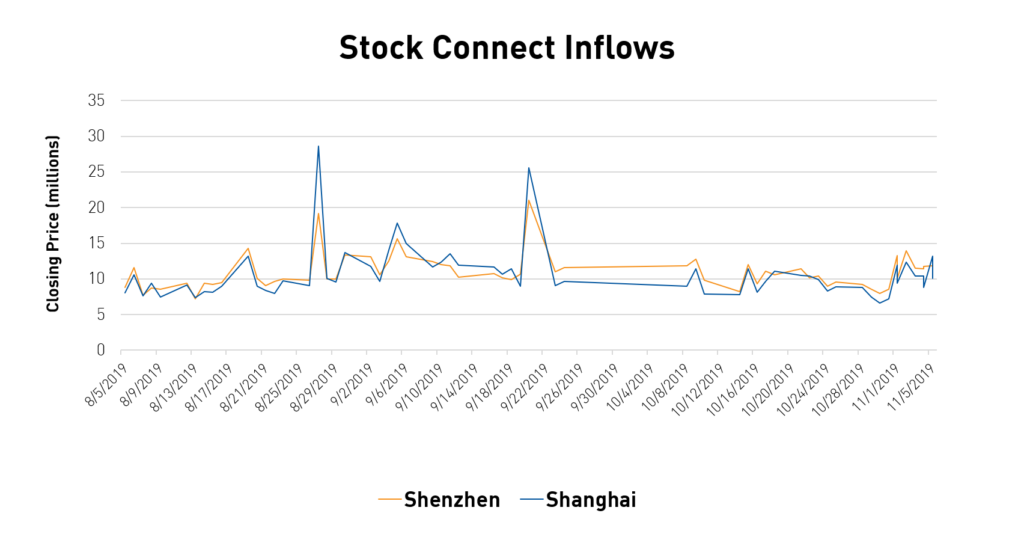
Indexes that do not hold Mid Caps, like the CSI 300 Index, may not be optimized to benefit from the influx of foreign investments into this specific subset of China A-shares. However, we believe the MSCI China A Index, which is becoming more diverse through the incremental inclusion process, is in a better position to evolve and grow alongside China's economy.
When it comes to investing in ETFs, bigger is not necessarily better. Rather than focus on an ETF’s AUM size, proper due diligence includes thoroughly understanding your exposure from both a sector and exchange perspective. To best capture China's expanding capital markets, an ETF benchmarked to the MSCI China A Index is preferable for its dynamic constituent makeup which better harnesses the investment opportunity in China.
- MSCI, “MSCI Equity Indexes November 2019 Index Review”, 11/07/2019.
- Data from MSCI as of 9/30/2019.
- Data from Bloomberg as of 9/30/2019, calculated by KraneShares.
- As of 6/30/2018, as reported on 9/30/2018 by eVestment, Morningstar and Bloomberg, retrieved 9/30/2019.
- MSCI.com/China retrieved 9/30/2019
- “MSCI Will Increase The Weight Of China A Shares In MSCI Indexes” MSCI, 9/30/2019
- MSCI, “China and the future of equity allocations”, June 2019.
- ChiNext Market is a board of the Shenzhen Stock Exchange that was created to help encourage entrepreneurship, inspire creativity, and popularize innovative business models in China.
- Data from HKEx as of 11/01/2019
Index Definitions
The MSCI China A Index: captures large and mid-cap representation across China securities listed on the Shanghai and Shenzhen exchanges. The index covers only those securities that are accessible through "Stock Connect". The index is designed for international investors and is calculated using China A Stock Connect listings based on the offshore RMB exchange rate (CNH). The inception date of the Index was 3/01/2018.
CSI 300 Index: consists of the 300 largest and most liquid A-share stocks. The Index aims to reflect the overall performance of China A-share market. The inception date of the Index was 4/08/2005.
The KraneShares ETFs are distributed by SEI Investments Distribution Company (SIDCO), 1 Freedom Valley Drive, Oaks, PA 19456, which is not affiliated with Krane Funds Advisors, LLC, the Investment Adviser for the Fund. Additional information about SIDCO is available on FINRA’s BrokerCheck.
Potential Risks of A-Shares & the Stock Connect Program
Investments in A-Shares are subject to various restrictions. Investments in A-Shares are heavily regulated and the recoupment and repatriation of assets invested in A-Shares is subject to restrictions by the Chinese government. A-Shares may be subject to frequent and widespread trading halts and may become illiquid. This could cause volatility in the Fund’s share price and subject the Fund to a greater risk of trading halts.
Stock Connect Program Risk
The Stock Connect Programs are subject to daily and aggregate quota limitations, and an investor cannot purchase and sell the same security on the same trading day, which may restrict the Fund’s ability to invest in A-Shares through the Programs and to enter into or exit trades on a timely basis. The Shanghai and Shenzhen markets may be open at a time when the participating exchanges located outside of mainland China are not active, with the result that prices of A-Shares may fluctuate at times when the Fund is unable to add to or exit its positions. Only certain China A-Shares are eligible to be accessed through the Stock Connect Programs. Such securities may lose their eligibility at any time, in which case they could be sold but could no longer be purchased through the Stock Connect Programs. Because the Stock Connect Programs are still evolving, the actual effect on the market for trading A-Shares with the introduction of large numbers of foreign investors is still relatively unknown. Further, regulations or restrictions, such as limitations on redemptions or suspension of trading, may adversely impact the program. There is no guarantee that the participating exchanges will continue to support the Stock Connect Programs in the future.
R_KS_SEI








